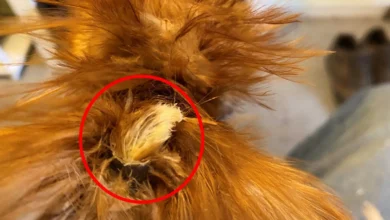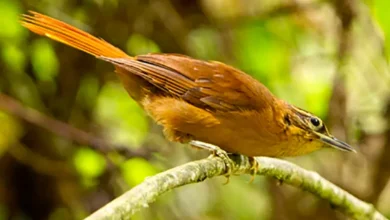The Black-necked Aracaris (Pteroglossus aracari) is a South American Toucan that occurs naturally in Brazil, French Guiana, Guyana, Suriname and Venezuela, where it is inhabits a variety of forest and woodland habitats.

Aracaris generally roost socially throughout the year. Up to five adults and their fledged offspring sleep in the same hole with their long tails folded over their backs.
Description
The Black-necked Aracari is one of the larger aracaris – with an average length of 13 inches or 33 cm and a beak measuring up to 4 inches or 10 cm. It weighs around 180 grams (around 6.3 oz).
It has a black head with chestnut-black ear-coverts (feathers covering the ears). The upperparts are dark green with a red rump. The underparts are yellow with a black throat and a red band across the lower chest.
The upperbill is ivory and the lower bill black.
Breeding
They nest in trees with appropriate hollows, most of which are previously made by woodpeckers. Other hollows are the result of a branch break and ensuing rotting of the heart wood from rain over a period of time.
In captivity, their nests are typically constructed from palm tree logs. Some may use nest boxes.
Both the male and female share the incubation and chick rearing duties.
The eggs are incubated for about 16 days. The newly hatched chicks are blind and naked with short bills and thick pads on their heels to protect them from the rough floor of the nest. Both parents, as well as their previous offspring and/or possibly other adults, feed the chicks. The young fledge after about 6 weeks. The adults continue to feed them for several weeks after fledging.
Captive birds are docile, easy to breed, and typically do well in large, planted flights. They are relatively common in the United States.

Aviculture
These active Aracaris require large, planted flights. Aracaris are generally docile and can be kept with smaller birds — but not birds so small that they (or their young) could be considered as prey by these large birds, such as finches. Breeding pairs are best kept alone.
Captive birds may breed in nest boxes with a concave bottom; however, they generally prefer natural nests constructed from palm tree logs, which allows them to dig their nest chambers deeper.
Jerry Jennings, President / Director of Emerald Forest Bird Gardens provides the following input:
“Toucanets and Aracaris … all require the same space. The smallest breeding flight I have used was 4′ x 10′ x 6 feet high and the flights I currently use are 8′ x 12′ x 8 feet high and the newest flights are 8′ x 16′ x 8 feet high.
They need the proper diet, a nest log and the pairs must be compatible.
I would start with the easiest, so when you have babies you will feel a sense of accomplishment and want to continue. If you start with a difficult species you will have much less luck and may become discouraged.” (Source: Jerry Jennings, President / Director of Emerald Forest Bird Gardens)



